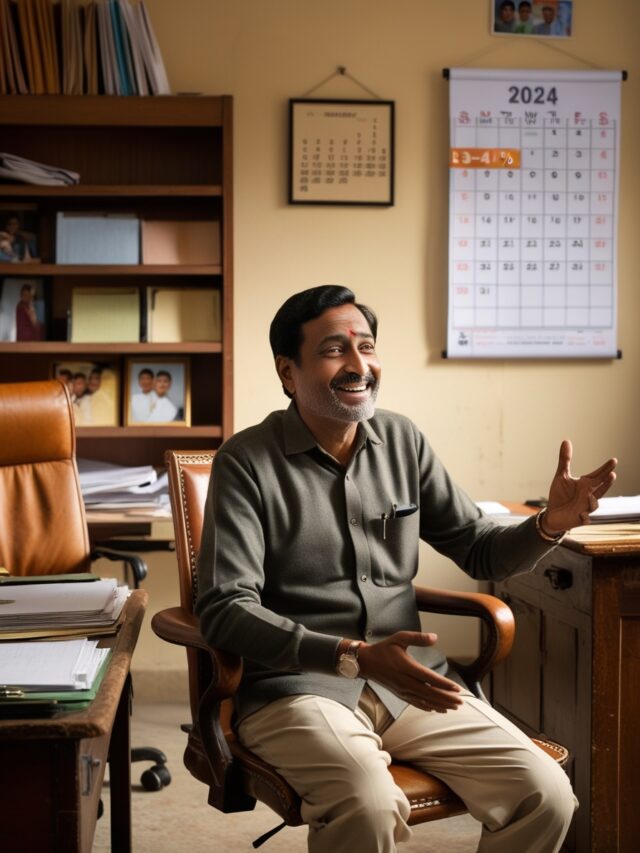
1. Who initiated the process of decentralization of finances in India?
- Lord Rippon
- Lord Mayo
- Lord Curzon
- Lord Minto
Show Answer
Answer: Lord Mayo
Lord Mayo, the 4th Viceroy of India, served from January 12, 1869, to February 8, 1872. He initiated a process of financial decentralization during his tenure. This effort aimed to grant more fiscal authority to provincial governments and reduce the central government’s control over finances. His financial resolution of 1870 marked the first significant step toward bifurcating central and provincial finances.
2. For which commodities were the Indian peasants forced to grow, making the British wealthier during the British rule in India?
- Indigo
- Opium
- Cotton
- All of them
Show Answer
Answer: All of them
During British rule in India, British authorities exerted economic control over the country. They compelled Indian peasants to cultivate crops such as indigo, opium, and cotton to serve British economic interests. This practice was a form of exploitative agrarian economy, where Indian farmers were forced to produce cash crops for export, rather than for their subsistence.
3. Through his work “Poverty and Un-British Rule in India,” Dadabhai Naoroji highlighted which reasons for India’s poverty?
1) Expenditure of European Officials in England
2) Money sent by British professionals to England
3) India’s Population growth
4) Inflow of British Capital in India.
Select the correct option from the codes given below:
- Only 1, 2 & 3
- Only 2, 3 & 4
- Only 1, 2 & 4
- 1, 2, 3 & 4
Show Answer
Answer: 1, 2, 3 & 4
In his work, Dadabhai Naoroji highlighted four reasons for India’s poverty:
1) Expenditure of European Officials in England,
2) Money sent by British professionals to England,
3) India’s Population growth, and
4) Inflow of British Capital in India.
4. Who launched the “No Rent Campaign” in the last leg of the 19th century?
- Mahatma Gandhi
- Bal Gangadhar Tilak
- Sri Aurobindo
- Lala Lajpat Rai
Show Answer
Answer: Bal Gangadhar Tilak
Bal Gangadhar Tilak, a prominent freedom fighter and leader, led the “No Rent Campaign” in 1896. This campaign involved the non-payment of taxes as a form of direct defiance against British administrative authority. It was initiated during the 1896 famine, aiming to protest against the British policies that exacerbated the suffering of the Indian population.
5. In what way was the Indian cotton industry inferior to that of England during the British rule in India?
- Indian textile industry had an ever-increasing and large domestic market.
- There was plenty of raw material available.
- The industry was not managed by highly skilled technicians and managers
- India was the traditional home for cotton textiles.
Show Answer
Answer: Brij
India’s cotton industry during British rule faced limitations compared to England’s more advanced cotton industry. India lacked industrialization, highly skilled technicians, and efficient management, making it less competitive and advanced in comparison to the British cotton industry.
6. Which among the following about Lord Mayo’s resolution of 1870 is correct?
- It was the first step that bifurcated central and provincial finances.
- Provincial Governments were empowered to administer certain services.
- It attempted to rectify existing imparity.
- It focused on the actual needs of the provinces
Show Answer
Answer: It was the first step that bifurcated central and provincial finances.
Lord Mayo’s resolution of 1870 was the first step that bifurcated central and provincial finances and empowered provincial governments to administer certain services.
7. Who of the following was also addressed as Sajjan?
- Lord Rippon
- Lord Attenborough
- Lord Evans
- Lord William I
Show Answer
Answer: Lord Rippon
Lord Ripon, as Viceroy of India, introduced numerous measures to ameliorate the condition of native Indians. He was popularly known as “Ripon, the Good” or “Sajjan Ripon.” His significant contributions included pioneering local self-government in modern India, a step toward empowering local communities and decentralizing authority.
8. Among the following matches of Lord Cromer’s revenue division and their corresponding beneficiaries, which is/are correct?
- Imperial – Central Government
- Provincial – Provinces
- Divided – Equal distribution between Imperial and Provincial government
Choose the correct code
- Only 1 and 3
- Only 2 and 3
- Only 3
- 1, 2 & 3
Show Answer
Answer: 1, 2 & 3
Lord Cromer’s revenue division classified government finances into three categories: Imperial, Provincial, and Divided. The Imperial category corresponded to the Central Government’s financial responsibilities, the Provincial category represented financial responsibilities of the Provinces, and the Divided category entailed equal distribution of financial resources between the Imperial and Provincial governments.
9. Which of the following about the Royal Commission on Decentralization is correct?
- It was set up in 1907 by the British Government.
- Its main objective was to investigate the financial and administrative relations of Central and provincial government.
- The only Indian member of this commission was R.C. Dutt.
- The report of this commission was published in 1909.
Choose the right code
- 1, 2, and 3
- 2, 3, and 4
- 1, 3 and 4
- 1, 2, 3, and 4
Show Answer
Answer: 1, 2, 3, and 4
The Royal Commission on Decentralization was established in 1907 by the British Government to investigate the financial and administrative relations between the Central and provincial governments in India. The commission’s primary goal was to assess the financial autonomy and governance structures. R.C. Dutt was the only Indian member of this commission, and the commission’s findings were published in 1909.
10. Which of the following objectives was the Provincial Relations Committee under Lord Meston appointed for?
- To recommend necessary steps to restore the deficit of the central government.
- To recommend necessary steps to enhance the revenue of the provinces.
- To recommend necessary steps to settle the problem of tax evasion.
- None of the above
Show Answer
Answer: To recommend necessary steps to restore the deficit of the central government.
The Provincial Relations Committee, led by Lord Meston, was appointed to recommend steps for resolving the central government’s deficit. This committee focused on finding ways to address the financial challenges faced by the central government in India.
Q11: Which Act introduced provincial autonomy in India?
1. Government of India Act 1858
2. Indian Council Act 1892
3. Government of India Act 1935
4. Government of India Act 1919
Show Answer
Answer: 3
Explanation: The Government of India Act 1935, a significant legislative measure, introduced provincial autonomy in India. It divided powers and responsibilities between the Central and Provincial governments, granting a considerable degree of self-governance to the provinces.
Q12: Which article of the Indian Constitution provides grants-in-aid?
1. Article 112
2. Article 280
3. Article 275
4. Article 110
Show Answer
Answer: 3
Explanation: Article 275 of the Indian Constitution provides for grants-in-aid to States as recommended by the Parliament. These grants are intended to support the financial needs of Indian states and promote cooperative federalism between the central and state governments.
Q13: Who said, one-third of Bengal had been transformed into a jungle inhabited only by wild beasts?
1. Lord Cornwallis
2. Lord Lytton
3. Lord Wellesley
4. Lord Curzon
Show Answer
Answer: 1
Explanation: Lord Cornwallis’s statement that one-third of Bengal had been transformed into a jungle inhabited only by wild beasts underscores the significant impact of British colonial policies on India’s landscape and ecology. These policies, including land revenue and agricultural practices, contributed to environmental degradation and changes in land use, resulting in the transformation of agricultural land into wilderness. This statement reflects the consequences of British policies on the environment and local communities in Bengal.
Q14: Which of the following matches of books and their writers are correct?
1. Prosperous British India – William Digby
2. Poverty and Un-British Rule in India – Dadabhai Naoroji
3. Economic History of India – R. C. Dutt
4. All of the above
Show Answer
Answer: 4
Explanation: The matches of books and their writers are accurate: Prosperous British India was indeed written by William Digby, Poverty and Un-British Rule in India was authored by Dadabhai Naoroji, and Economic History of India was written by R.C. Dutt. These works are notable for their contributions to understanding the economic and social conditions of colonial India.
Q15: When was the first cotton mill in India established?
1. 1818
2. 1825
3. 1855
4. 1862
Show Answer
Answer: 1
Explanation: The first cotton mill in India was indeed established in 1818 at Fort Gloster near Kolkata and was known as Bowreah Cotton Mill. This marked the beginning of India’s industrialization in the textile sector.
Q16: When was the first jute mill in India established?
1. 1830
2. 1855
3. 1866
4. 1878
Show Answer
Answer: 2
Explanation: The Acland Mill was indeed the first jute mill established in India in 1855. George Acland, a British entrepreneur, and Babu Bysumber Sen, a Bengali financier, played significant roles in founding this mill, located in Rishra, Bengal Presidency, British India.
Q17: When was the Indian Jute Mills Association established?
1. 1855
2. 1866
3. 1884
4. 1889
Show Answer
Answer: 3
Explanation: The Indian Jute Mills Association was established in 1884, initially under the name Indian Jute Mills Association and later renamed Indian Jute Mills Association in 1902. It played a significant role in the jute industry’s development in India during the colonial period, although it remained under British control.
Q18: Which was the first cotton mill established in Bombay?
1. Bowreah Cotton Mill
2. Bombay Empress Mill
3. Bombay Spinning and Weaving Company
4. None of the above
Show Answer
Answer: 3
Explanation: The first cotton mill established in Bombay was indeed the Bombay Spinning and Weaving Company, founded on 7th July 1853 by Cowasjee Nanabhoy Davar. This marked the beginning of textile industrialization in Bombay (now Mumbai).
Q19: Who established The Scindia Steam Navigation Company?
1. Jamsetji Tata
2. Walchand Hirachand
3. Nanabhoy Davar
4. George Acland
Show Answer
Answer: 2
Explanation: The Scindia Steam Navigation Company was indeed founded by Narottam Morarjee and Walchand Hirachand in 1919. It played a pivotal role in India’s maritime transport and was associated with the country’s freedom struggle.
Q20: In which year did the Government of India set up an Industrial commission under the leadership of Thomas Holland?
1. 1901
2. 1905
3. 1905
4. 1916
Show Answer
Answer: 4
Explanation: The Government of India did establish an Industrial Commission in 1916, with Thomas Holland leading it. The primary purpose of this commission was to provide recommendations for industrial sector development, reflecting the growing industrialization in India during the colonial period.
Q21: Who founded Bengal Chemicals & Pharmaceuticals Ltd.?
1. Prafulla Chandra Roy
2. Homi J. Bhabha
3. Satyendra Nath Bose
4. Har Gobind Khorana
Show Answer
Answer: 1
Explanation: Bengal Chemicals & Pharmaceuticals Ltd. was indeed founded by Prafulla Chandra Roy in 1901. It is recognized as one of the earliest pharmaceutical companies in India, contributing to the growth of the Indian pharmaceutical industry.
Q22: Who was the writer of the novel Robinson Crusoe?
1. Daniel Defoe
2. Daniel Wellington
3. Thomas Richardson
4. None of the above
Show Answer
Answer: 1
Explanation: Robinson Crusoe was indeed written by Daniel Defoe in 1719. The novel is a classic work of English literature and was published during a period that coincided with the impact of India’s textile development on England.
Q23: Which of the following matches the stages of colonialism with their correct timelines?
1. Period of Mercantilism – 1757-1813
2. Period of Laissez Faire – 1813-1860
3. Period of Finance Imperialism – 1860-1847
4. All of the above
Show Answer
Answer: 4
Explanation: The matches of the stages of colonialism with their timelines are correct: Period of Mercantilism (1757-1813), Period of Laissez Faire (1813-1860), and Period of Finance Imperialism (1860-1947). These stages reflect the evolving economic and political dynamics during the British colonial rule in India.
Q24: Which features of the Period of Mercantilism are correct?
1। Trade monopoly
2। Plundering and seizure of power
3। Less import of British goods
4। Absence of structural changes in judiciary, economy, and administration
Choose the right code
1. 1 & 2
2. 1, 2 & 3
3. 2, 3 & 4
4. 1, 2, 3 & 4
Show Answer
Answer: 4
Explanation: The features of the Period of Mercantilism (1757-1813) accurately include characteristics like trade monopoly, the British acquisition of power and resources, limited imports of British goods, and the absence of significant structural changes in various aspects of Indian society and administration.
Q25: The Downward Filtration Theory of the British is associated with which of the following?
1. Agriculture
2. Industry
3. Education
4. Trade
Show Answer
Answer: 3
Explanation: The Downward Filtration Theory of the British is associated with Education. It was followed until 1854 and aimed to provide education to a limited number of people who would then spread education to the masses.
Q26: Which are the earliest machine-based modern industries of India?
1. Cotton Textile industry
2. Coal Mining Industry
3. Jute Industry
4. All of the above
Show Answer
Answer: 4
Explanation: The earliest machine-based modern industries of India are the Cotton Textile Industry, Coal Mining Industry, and Jute Industry.
Q27: Home charges during British rule included expenses for:
1। Functioning of the India office in London
2। Salaries and pensions of British personnel engaged in India
3। Waging wars outside India by the British
Choose the right code
1. 1 only
2. 1 and 2 only
3. 1 and 3 only
4. 1, 2 and 3
Show Answer
Answer: 3
Explanation: Home charges included the expenses for the functioning of the India office in London and salaries and pensions of British personnel engaged in India. It also covered funds for waging wars outside India.
Q28: The Downward Filtration Theory of the British is associated with which of the following?
1. Agriculture
2. Industry
3. Education
4. Trade
Show Answer
Answer: 3
Explanation: The Downward Filtration Theory of the British is associated with Education. It was followed until 1854 and aimed to provide education to a limited number of people who would then spread education to the masses.
Q29: Who is known as the Father of land settlement in Northern India?
1. Dadabhai Naoroji
2. Lord Cornwallis
3. Lord Hastings
4. Merttins Bird
Show Answer
Answer: 4
Explanation: R. Merttins Bird is indeed known as the Father of land settlement in Northern India. He served as the Lieutenant Governor of the North-Western Provinces and made significant contributions to land revenue and settlement policies in that region during the colonial era.







